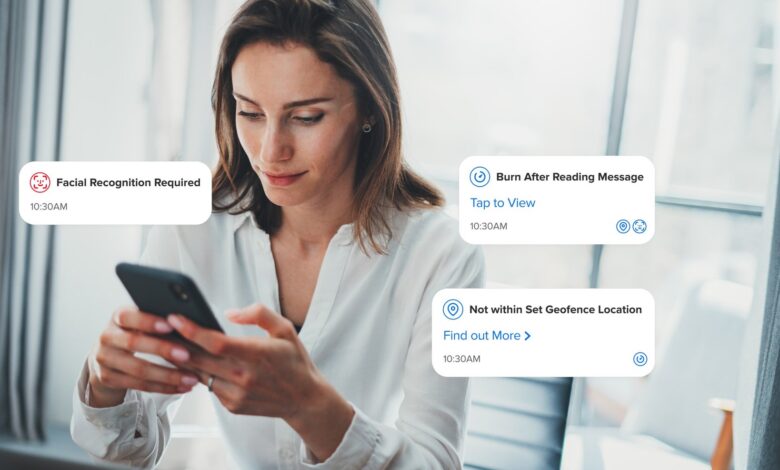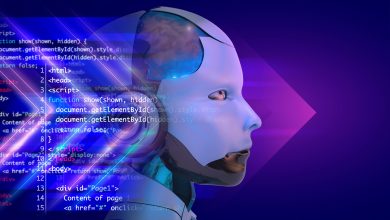
The cyber threat landscape has changed beyond recognition in recent years. What were once theoretical concerns about AI-powered attacks have now become daily realities for businesses and governments worldwide. Alongside high-profile incidents like the recent White House leaks — which highlight the broader vulnerabilities in secure communications — the rapid rise of deepfakes, AI-generated malware, and increasingly sophisticated disinformation campaigns, has created an urgent need to rethink how secure communication platforms are built and protected. Central to this evolution is the role of AI — not as a future concept, but as an immediate, actionable tool to counter these complex and growing threats.
The Age of Synthetic Deception
Deepfakes have emerged as one of the most insidious tools in the arsenal of cybercriminals. By using AI to fabricate convincing audio and video forgeries, attackers can mimic trusted voices and faces, manipulate communications, and mislead even the most vigilant professionals. These synthetic media assets erode trust in digital communications, creating environments where even encrypted messages may not be enough to verify authenticity.
What complicates matters is the speed and scale at which these forgeries can be created. AI tools once confined to researchers’ labs are now readily accessible, democratising capabilities once reserved for state actors. Whether it is a falsified video call with a senior executive or an audio clip of a government official, deepfakes can deceive employees, partners, and the public with alarming ease.
AI: From Threat Vector to Defensive Shield
Ironically, the same AI technologies used to generate these threats can also be deployed to combat them. When integrated thoughtfully into secure communication platforms, AI acts as both a sentinel and a gatekeeper, protecting the integrity of every interaction.
One of the most powerful AI-driven tools in this space is continuous biometric authentication. Unlike traditional security measures — such as passwords or even one-time facial recognition checks at login — continuous authentication ensures that the user is verified in real time, throughout the entire communication session. This means that even if a deepfake manages to initiate a call or access a platform, the AI will detect discrepancies in biometric patterns, instantly flagging or terminating the session.
Continuous facial recognition goes beyond mere access control; it creates a dynamic and adaptive security posture. Subtle inconsistencies in facial micro-movements, changes in lighting, or unnatural behaviours are all monitored, allowing the AI to distinguish between genuine human interaction and manipulated media assets. It essentially turns the user’s own identity into an ongoing authentication factor, making it significantly harder for adversaries to exploit compromised credentials or mimic legitimate users.
Beyond Verification: Ringfencing Communications
While real-time authentication provides robust front-line defence, advanced threats require a layered security architecture. Ringfencing sensitive communications is an increasingly vital strategy, involving multiple complementary technologies working together to create secure perimeters around digital interactions.
End-to-end encryption remains the cornerstone of secure communications, ensuring that only the intended parties can read or hear the content of a message. However, encryption alone does not address risks like internal leaks or compromised endpoints. To fill these gaps, advanced communication platforms are now integrating geofencing and content control mechanisms.
Geofencing restricts access to communications based on predefined physical locations. By enforcing location-based controls, organisations can ensure that sensitive discussions or data transfers occur only within trusted geographic boundaries. This is particularly crucial in sectors like defence, finance, or healthcare, where data sovereignty and jurisdictional compliance are paramount. Should a communication attempt originate outside the authorised zone, the system can block access in real time, adding another layer of contextual security.
Content control mechanisms further tighten security by removing the option for users to forward, copy, or screenshot sensitive communications. While these may seem like small restrictions, they dramatically reduce the risk of accidental or malicious data leaks. When sensitive material cannot be easily replicated or shared, the information’s integrity remains intact, even if a device falls into the wrong hands.
Proactive Defence Against AI-Generated Malware
AI-generated malware represents another emerging threat vector, capable of mutating and adapting to evade traditional detection systems. These sophisticated attacks exploit vulnerabilities at machine speed, often using social engineering tactics that mimic legitimate business communications to deceive employees.
AI-powered communication platforms are increasingly incorporating behavioural analytics to counter this. By learning typical user behaviours and flagging anomalies — such as unusual login times, atypical file-sharing patterns, or irregular geographic access points — AI systems can pre-emptively detect and isolate potential threats before they escalate. This predictive capability transforms cybersecurity from reactive to proactive, giving organisations a critical advantage against fast-moving adversaries.
AI models trained on vast datasets can recognise the digital fingerprints of malicious code embedded in communications. These models operate in real time, scanning attachments, links, and even embedded media for indicators of compromise, significantly reducing the risk of malware infiltration through trusted channels.
Trust and Compliance in an Era of Zero Trust
As businesses adopt a zero-trust architecture, where no user or device is inherently trusted regardless of location or credentials, AI becomes the operational backbone of this model. The combination of continuous authentication, location-aware access, and granular content control creates an ecosystem where trust is constantly verified, not assumed.
From a compliance perspective, this multi-layered approach supports adherence to stringent data protection regulations such as GDPR, HIPAA, and the emerging landscape of AI governance frameworks. By demonstrating a commitment to proactive security measures, organisations not only mitigate risk but also build confidence with regulators, clients, and partners.
Balancing Security with Usability
Of course, integrating advanced security features must not come at the expense of usability. Communication platforms need to balance airtight security with a seamless user experience, ensuring that protective measures enhance rather than hinder productivity.
AI is uniquely positioned to deliver this balance. Unlike manual security protocols that can be cumbersome and time-consuming, AI operates unobtrusively in the background. Continuous authentication, for example, removes the need for repeated logins without compromising security, while intelligent content controls provide users with the freedom to communicate confidently, knowing that safeguards are automatically in place.
The future lies in making security frictionless — empowering users to focus on meaningful collaboration while the technology takes care of protecting their data.
Looking Ahead: The Future of Secure Communications
As AI-driven threats continue to evolve, so too must the defences designed to counter them. The next frontier in secure communications will likely involve even deeper integration of AI, leveraging emerging technologies like deepfake detection algorithms, AI-driven risk scoring, and automated incident response workflows.
Deepfake detection, in particular, is poised to become a vital line of defence. By analysing voice cadence, video artefacts, and other subtle anomalies, AI can help identify synthetic media in real time, preventing manipulated content from gaining traction within secure networks.
Similarly, AI-based risk scoring systems can provide dynamic assessments of communication sessions, adjusting security protocols on the fly based on factors such as user behaviour, device health, and external threat intelligence feeds. When a session is deemed high risk, additional verification layers can be automatically triggered, ensuring an adaptive defence posture.
Automated incident response will further reduce dwell time by enabling immediate isolation of compromised endpoints or sessions, accelerating the containment of breaches and limiting potential damage.
Conclusion: Building Trust in a Trustless World
The rise of deepfakes and AI-generated malware has underscored an uncomfortable truth: the digital world is becoming an environment where nothing can be taken at face value. In this climate, trust must be earned continually, not assumed. AI provides the tools to do just that — embedding intelligence into the very architecture of secure communications.
By adopting AI-powered solutions such as continuous biometric authentication, geofencing, content controls, and behavioural analytics, organisations can ringfence their sensitive communications and safeguard their reputations against emerging threats. These technologies transform security from a passive shield into an active, dynamic defence system.
For businesses navigating the complexities of digital transformation, AI offers not just protection, but peace of mind. It ensures that even in a world flooded with synthetic deception, authentic human connections remain safe, secure, and trustworthy.



